Abstract
The same plan of investigation as was used in a previous study of jute workers (Gandevia and Milne, 1965) has been applied to a survey of 50 workers in the blowroom and carding and spinning area of a Sydney cotton mill. Significant decreases in ventilatory capacity were recorded on Friday, Monday, and the following Thursday, with, on the average, complete `overnight' recovery, as indicated by similar morning values. Slightly, but not significantly, greater differences were observed in seven subjects with mild byssinotic symptoms and in five subjects with an observed productive cough on request. No effect of sex, shift, or history of cough and sputum was demonstrable. By contrast with the jute workers, no influence of smoking habit was apparent. The larger decreases in ventilatory capacity were observed in those with the higher F.E.V.1·0:F.V.C. ratios, whereas the reverse trend was noted in the jute workers. The occurrence of significant large decreases in those employed in the industry for less than a month, in conjunction with other evidence, suggests that a factor of `self-selection' may be operative among cotton employees in this country and may be related to the apparently low prevalence of clinically important byssinosis. Attention is drawn to two different patterns of change of ventilatory capacity over a week in subjects exposed to dusts sometimes associated with symptoms of byssinosis; the relationship of these changes and of chronic bronchitis to the development of clinical byssinosis is discussed.
Full text
PDF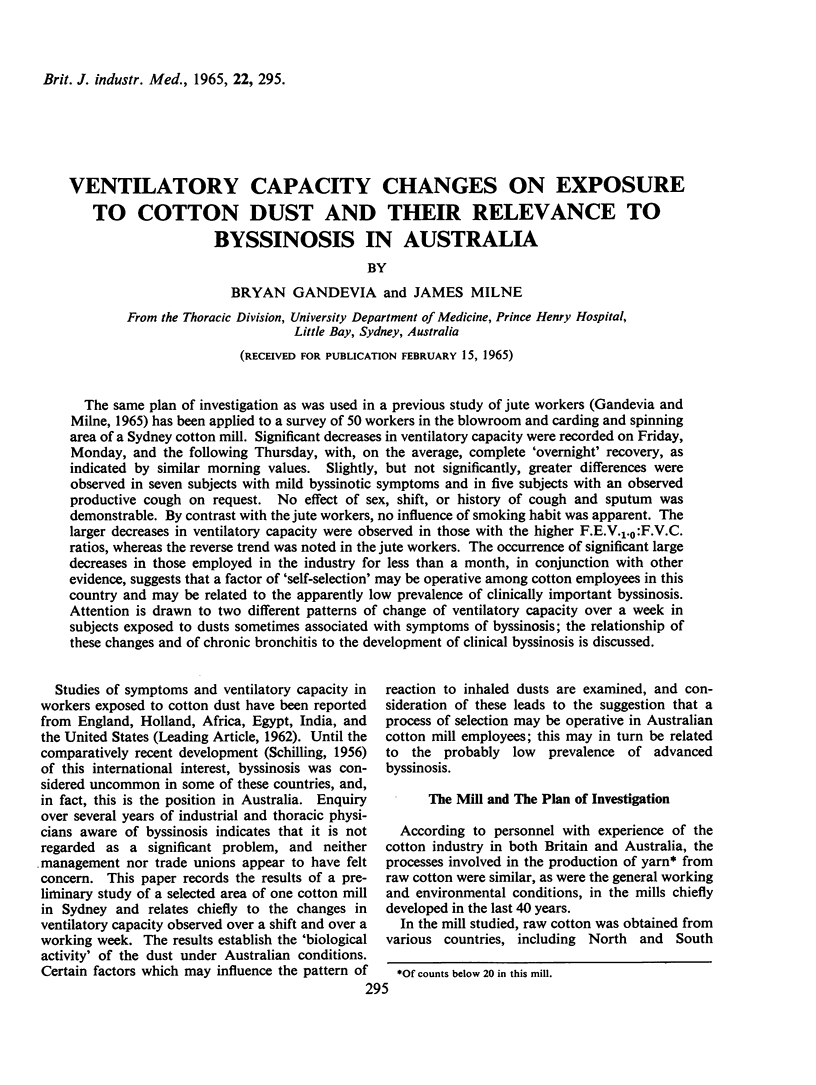
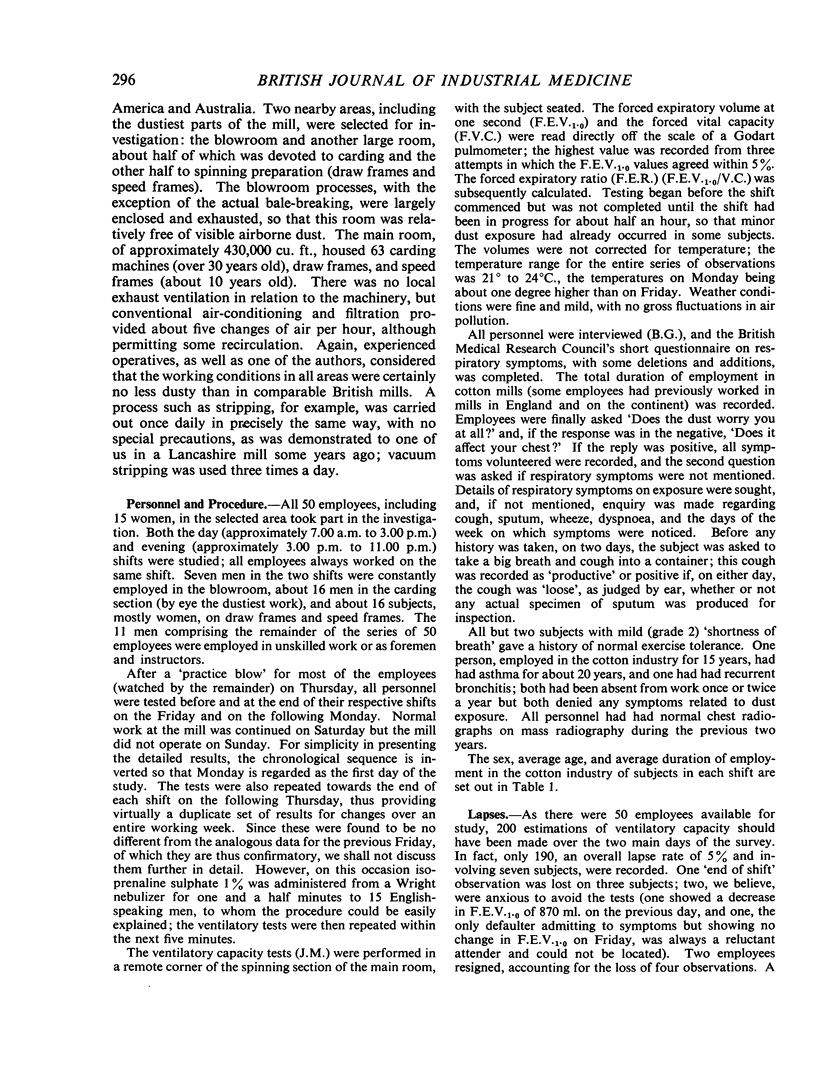
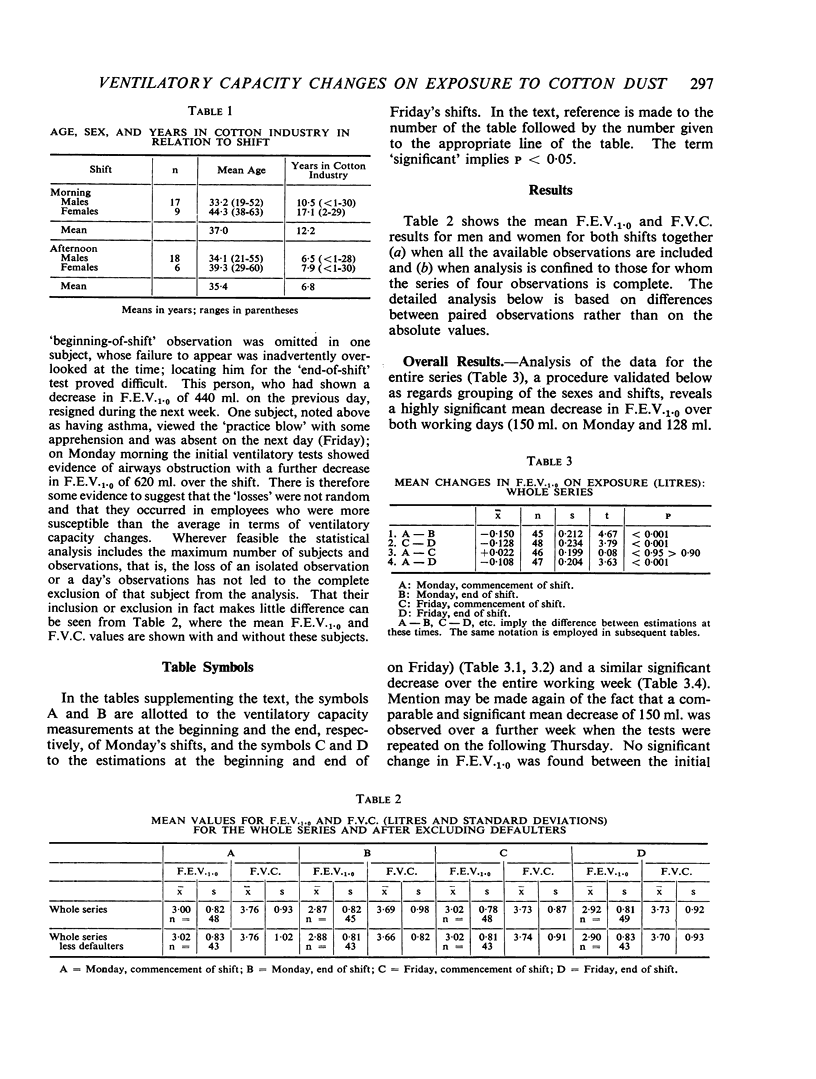
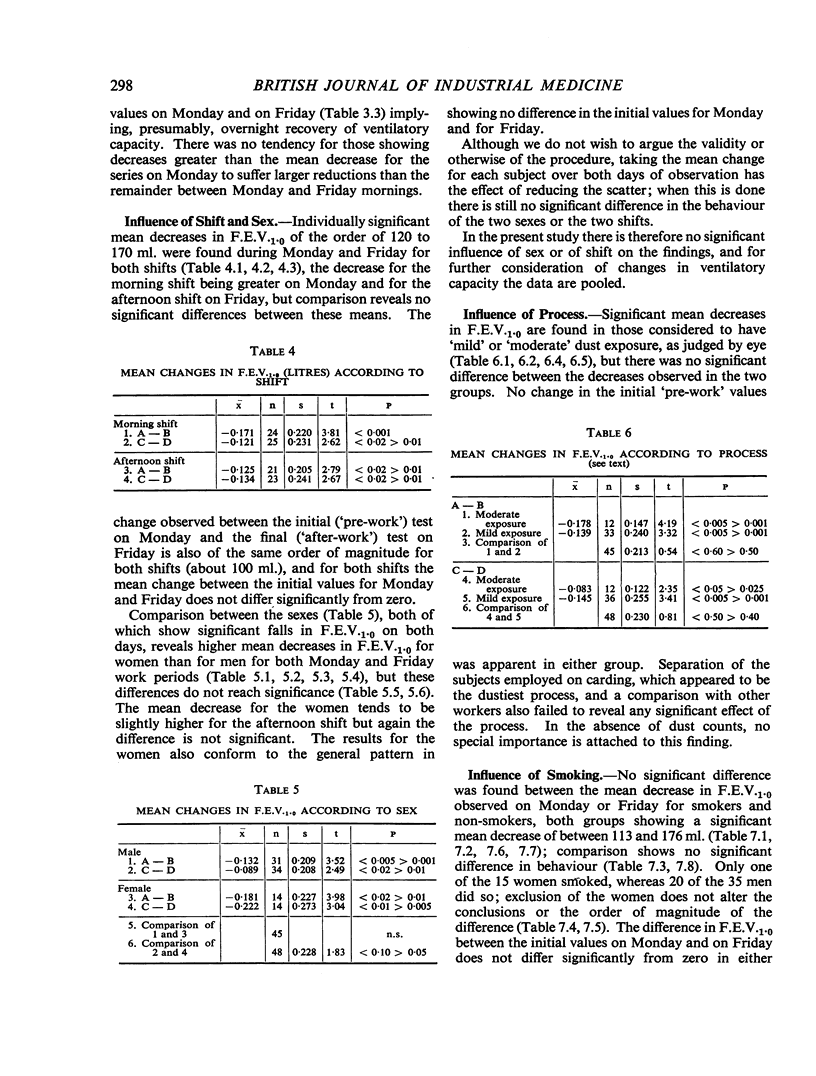
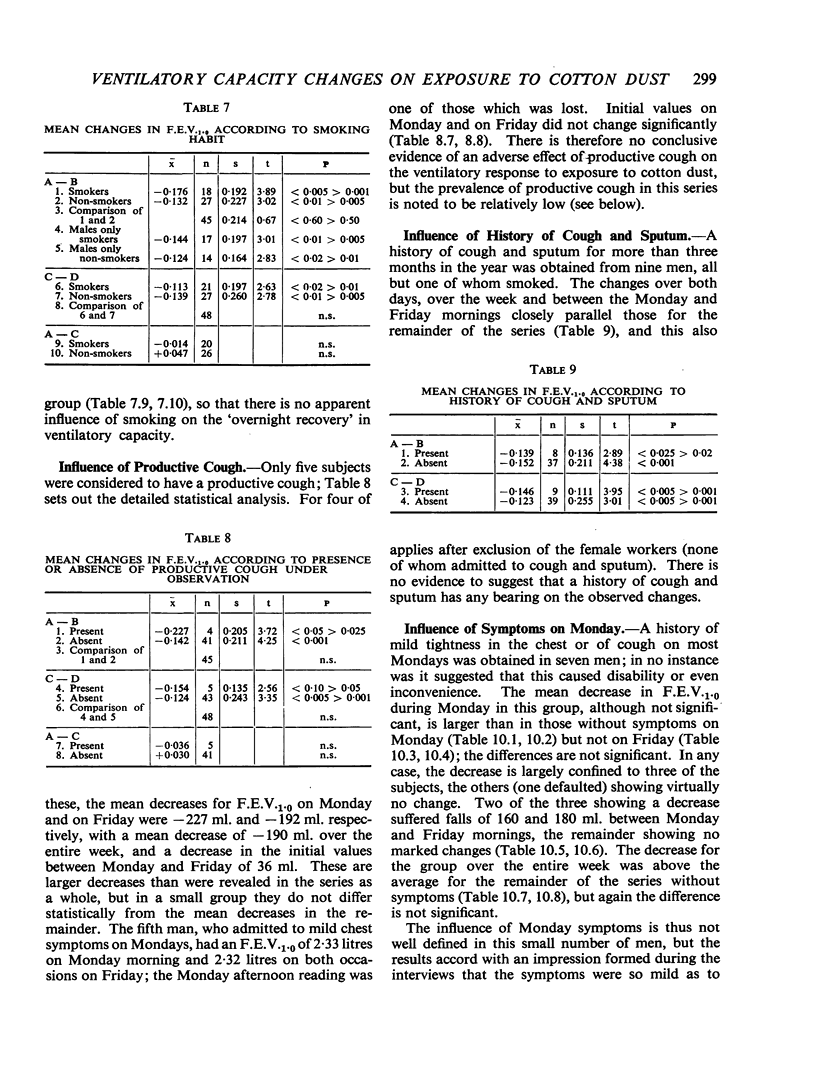
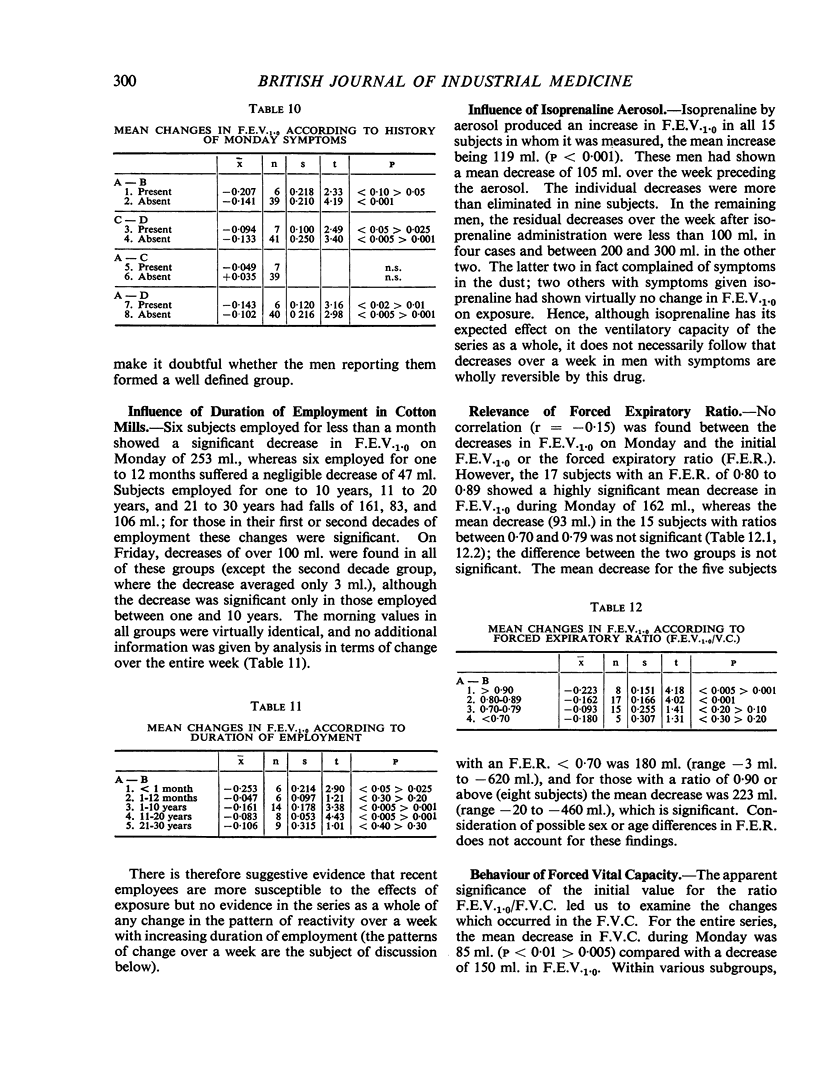
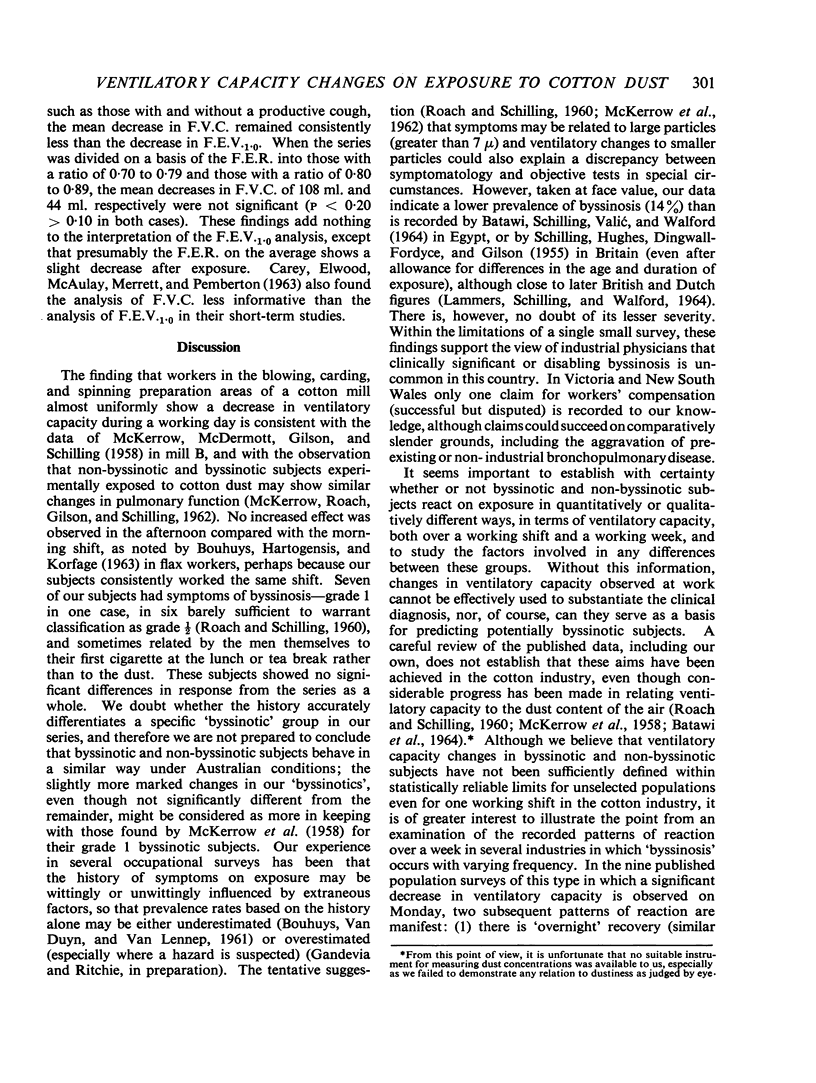
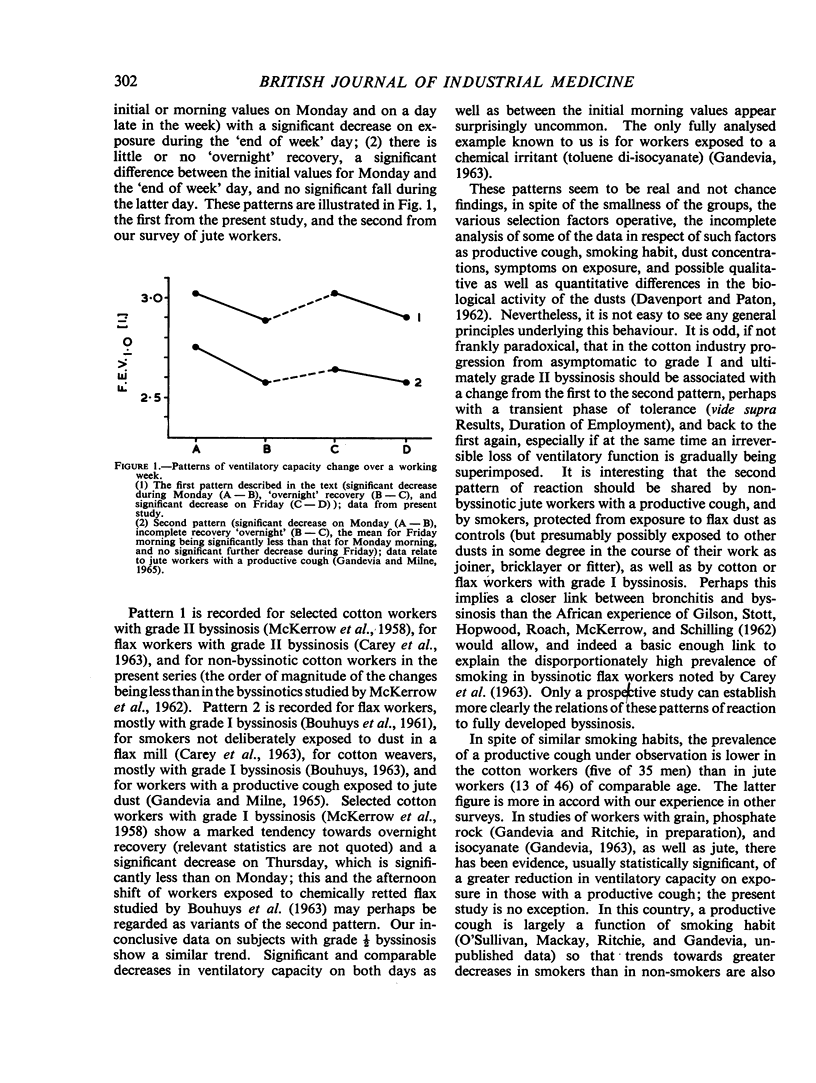
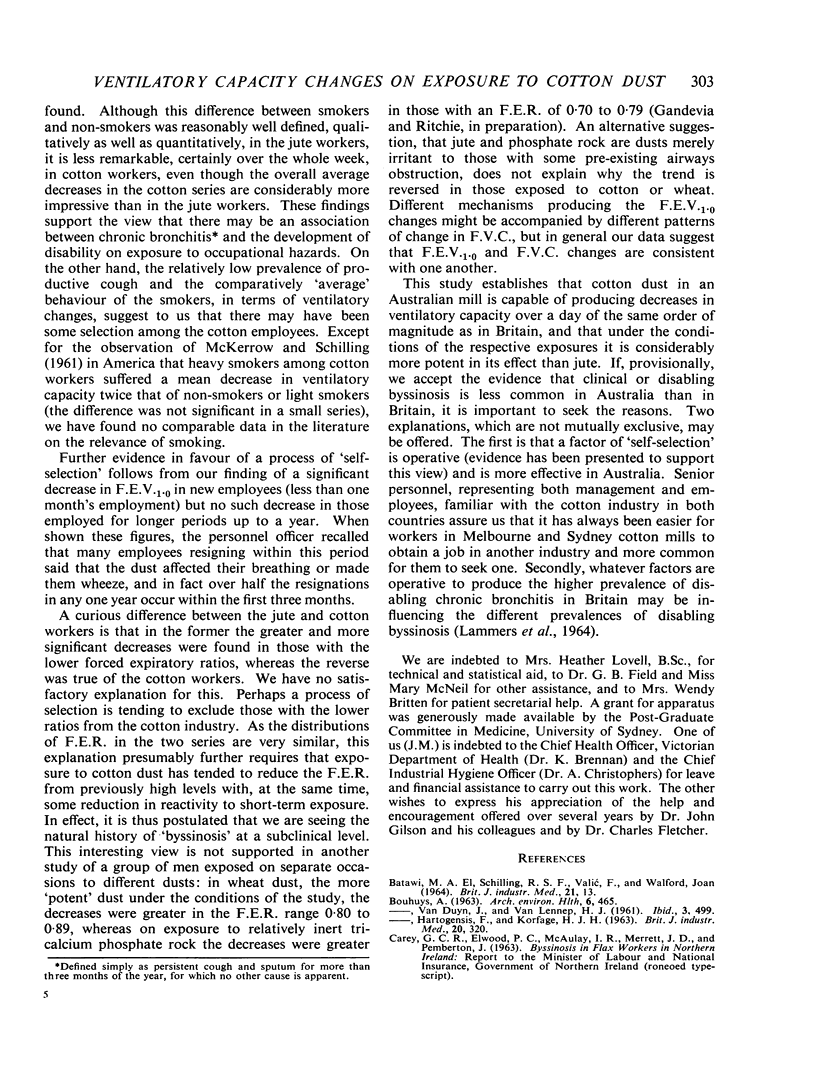
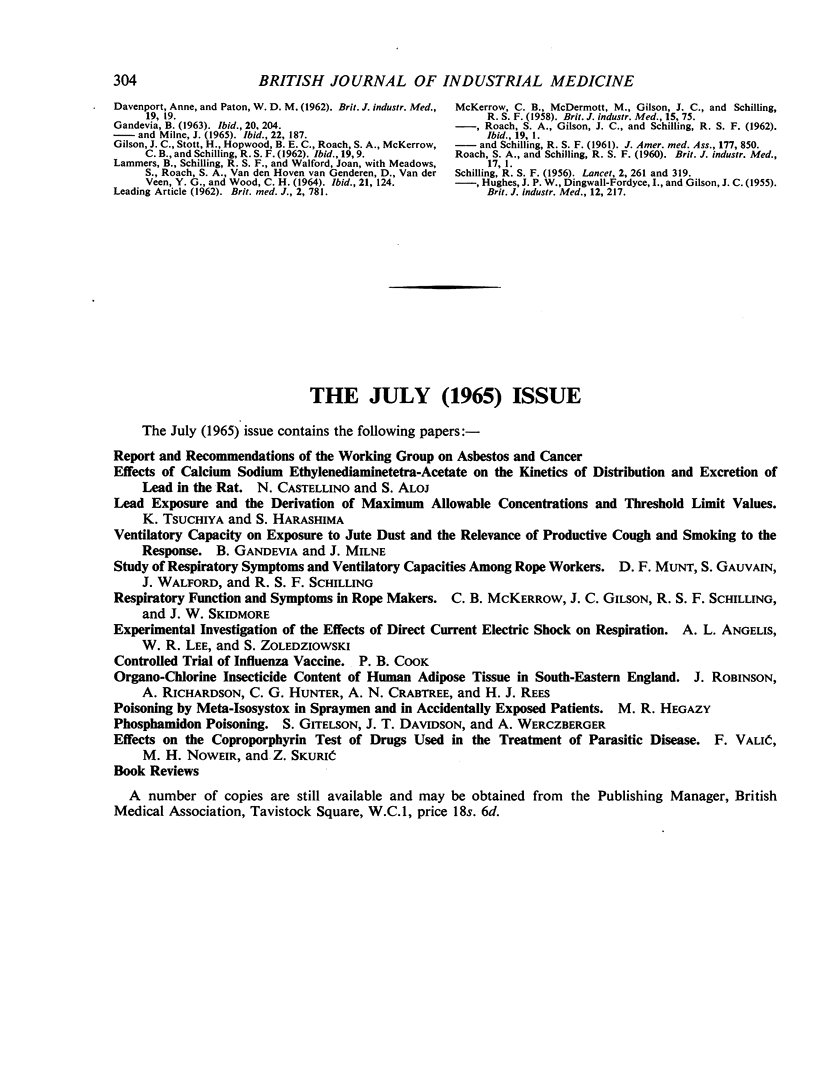
Selected References
These references are in PubMed. This may not be the complete list of references from this article.
- BOUHUYS A. Byssinosis in a cotton weaving mill. Arch Environ Health. 1963 Apr;6:465–468. doi: 10.1080/00039896.1963.10663427. [DOI] [PubMed] [Google Scholar]
- BOUHUYS A., HARTOGENSIS F., KORFAGE H. J. BYSSINOSIS PREVALENCE AND FLAX PROCESSING. Br J Ind Med. 1963 Oct;20:320–323. doi: 10.1136/oem.20.4.320. [DOI] [PMC free article] [PubMed] [Google Scholar]
- BOUHUYS A., van DUYN, van LENNEP H. Byssinosis in flax workers. Arch Environ Health. 1961 Nov;3:499–509. doi: 10.1080/00039896.1961.10663061. [DOI] [PubMed] [Google Scholar]
- LAMMERS B., SCHILLING R. S., WALFORD J., MEADOWS S., ROACH S. A., VAN DEN HOVEN D., VAN DEN VEEN Y. G., WOOD C. H. A STUDY OF BYSSINOSIS, CHRONIC RESPIRATORY SYMPTOMS, AND VENTILATORY CAPACITY IN ENGLISH AND DUTCH COTTON WORKERS, WITH SPECIAL REFERENCE TO ATMOSPHERIC POLLUTION. Br J Ind Med. 1964 Apr;21:124–134. doi: 10.1136/oem.21.2.124. [DOI] [PMC free article] [PubMed] [Google Scholar]
- SCHILLING R. S., HUGHES J. P., DINGWALL-FORDYCE I., GILSON J. C. An epidemiological study of byssinosis among Lancashire cotton workers. Br J Ind Med. 1955 Jul;12(3):217–227. doi: 10.1136/oem.12.3.217. [DOI] [PMC free article] [PubMed] [Google Scholar]


